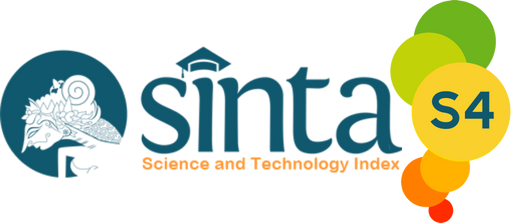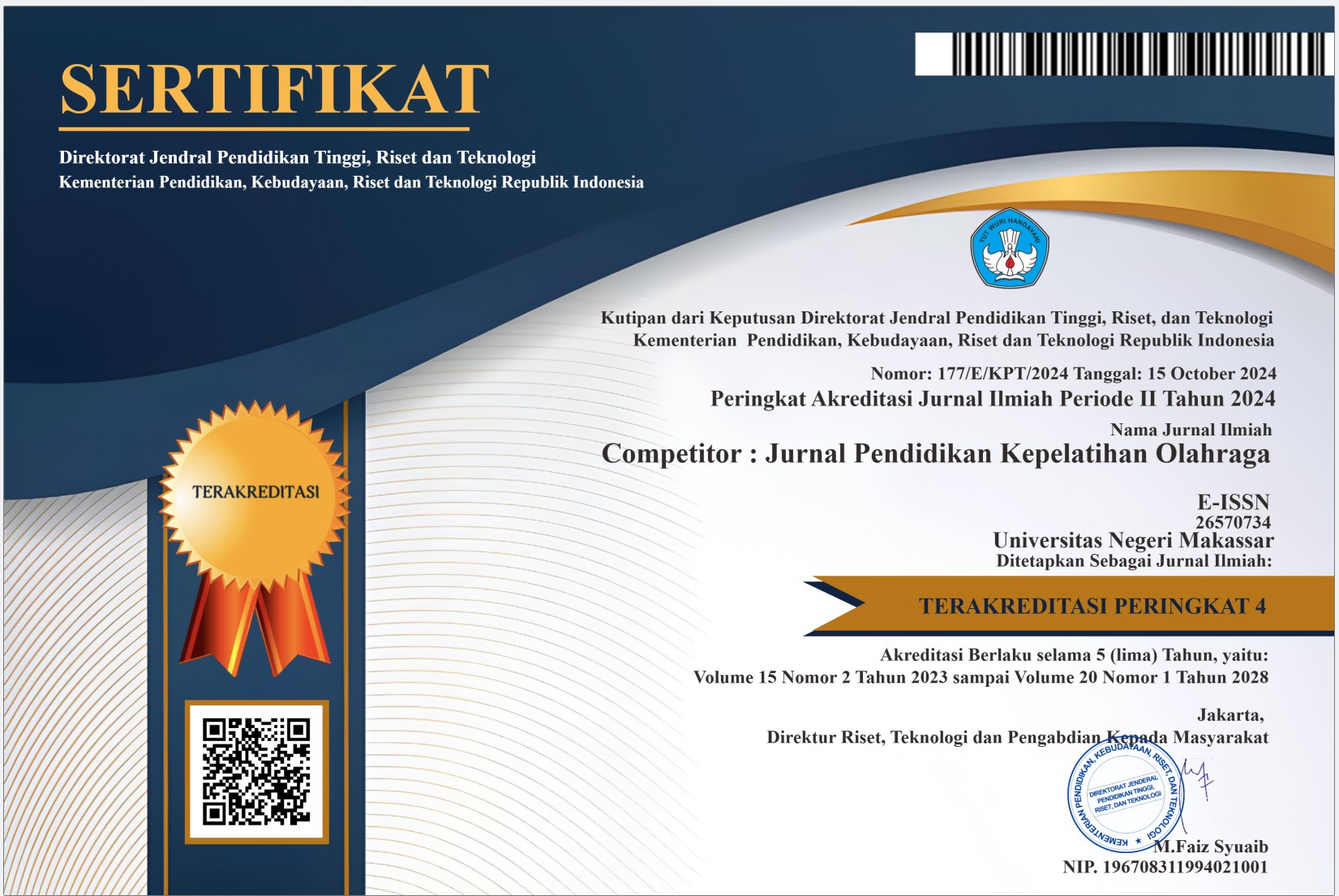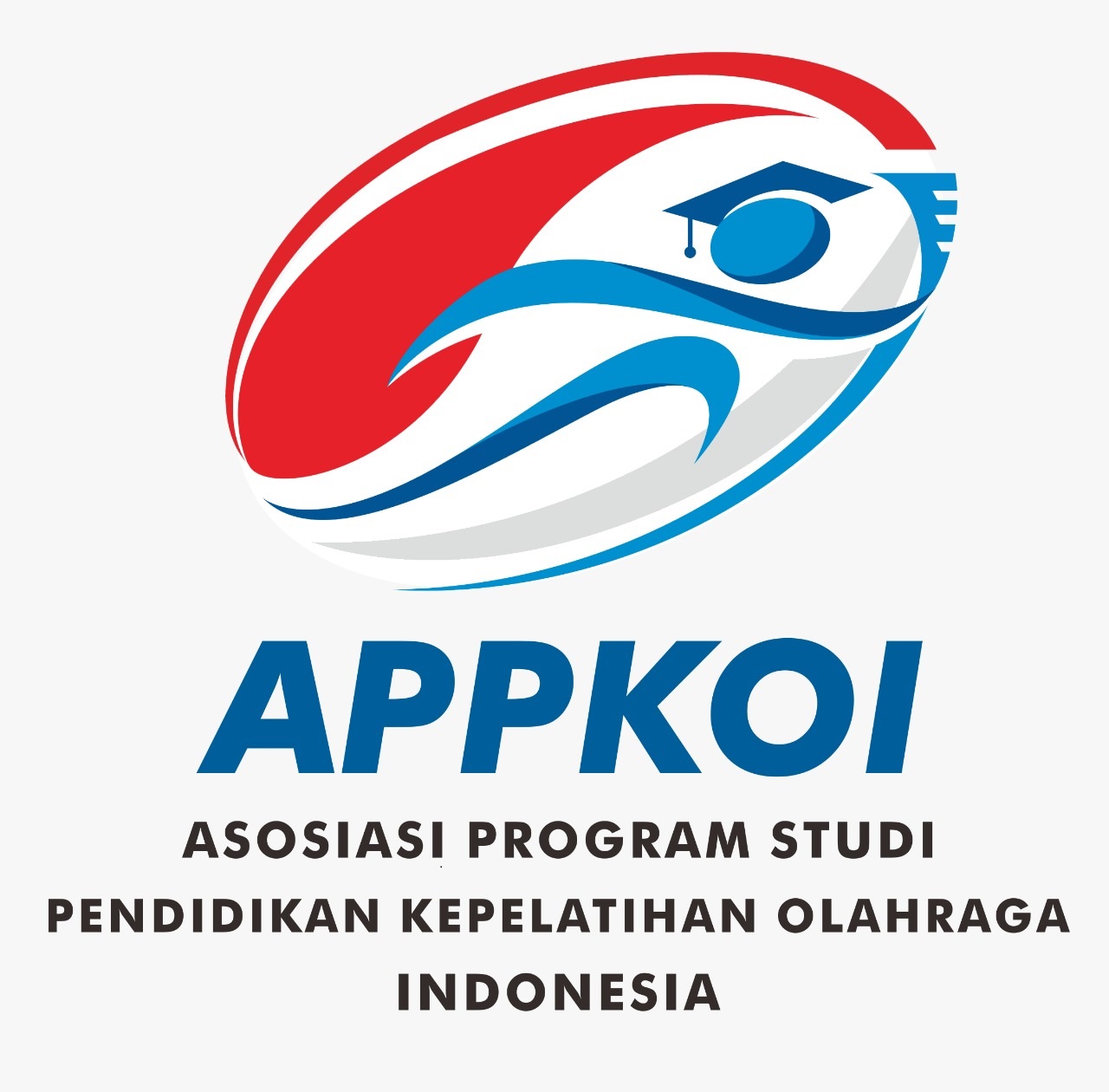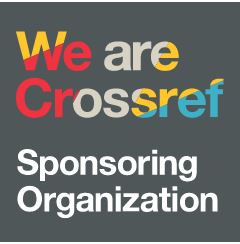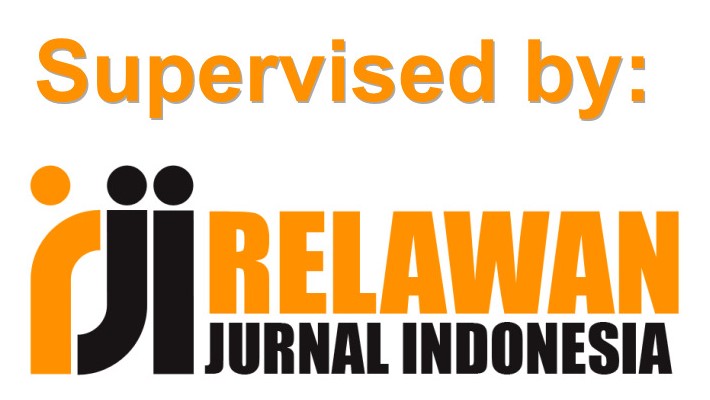The Role of Dryland Training Up and Down Stairs on Freestyle Swimming Kick Speed of STKIP PGRI Bangkalan Students
DOI:
https://doi.org/10.26858/cjpko.v17i2.101Kata Kunci:
dryland training, kick speed, freestyle swimmingAbstrak
Dryland training is an important component in developing swimming performance, especially to increase the strength and endurance of lower body muscles that contribute to kick speed in freestyle. This study aims to analyze the effect of stair climbing training as a form of dryland training on freestyle kick speed in non-athlete students. The research method used was a quasi-experimental with a one group pretest-posttest design . The subjects of the study consisted of 20 male non-athlete students aged 18–22 years, who were selected using a purposive sampling technique. The intervention was carried out for six weeks with a frequency of three times per week, consisting of 4–6 sets of stair climbing for 30 minutes each session. Swimming kick speed was measured with a stopwatch in a 15-meter track with a streamline position using a footboard. Data were analyzed using a paired t-test to see the difference before and after training. The results showed a significant increase in kick speed (p <0.05) after following the dryland training program. The average travel time decreased from 18.4 seconds to 16.7 seconds. These results indicate that stair climbing provides dynamic force transfer to the major muscles involved in the swimming kick, such as the quadriceps and gluteus muscles. In conclusion, stair climbing is an effective dryland training method to improve freestyle kick performance in non-athlete college students.
Referensi
Barbosa, T. M., Morouço, P. G. F., Jesus, S., Feitosa, W. G., Costa, M. J., Marinho, D. A., Silva, A. J., & Garrido, N. D. (2013). The interaction between intra-cyclic variation of the velocity and mean swimming velocity in young competitive swimmers. International Journal of Sports Medicine, 34(2), 123–130. https://doi.org/10.1055/s-0032-1312582
Costa, M. J., Balasekaran, G., Vilas-Boas, J. P., & Barbosa, T. M. (2015). Physiological Adaptations to Training in Competitive Swimming: A Systematic Review. Journal of Human Kinetics, 49, 179–194. https://doi.org/10.1515/hukin-2015-0120
Đurović, M., Ilić, P., Gračanin, I., Madić, D., & Okičić, T. (2024). Effect of dry-land strength training on swimming performance: A systematic review. Fizicko Vaspitanje i Sport Kroz Vekove, 11(1), 69–85. https://doi.org/10.5937/spes2401069d
Gemaini, A., Kiram, Y., Syahrastani, Ashmawi, U., Zakaria, J., & Purnomo, E. (2023). Plyometric training method potentially increasing explosive power of swimmer’s leg muscles compared to untrained swimmer’s. Journal of Physical Education and Sport, 23(12), 3183–3188. https://doi.org/10.7752/jpes.2023.12363
Ghosal, A. M., & Chandrasekaran, B. (2024). Stair-climbing interventions on cardio-metabolic outcomes in adults: A scoping review. Journal of Taibah University Medical Sciences, 19(1), 136–150. https://doi.org/10.1016/j.jtumed.2023.10.003
Hufadz, M. I., Shodiq, B., & Aryatama, B. (2025). Training Up and Down Stairs for 50 Meter Freestyle Swimming Speed at Win ’ s Swimming Course Swimming Club. JUMORA: Jurnal Moderasi Olahraga, 5(1), 85–93. https://doi.org/10.53863/mor.v5i1.1524
Hughes, D. C., Ellefsen, S., & Baar, K. (2018). Adaptations to Endurance and Strength Training. Cold Spring Harbor Perspectives in Medicine, 8(6). https://doi.org/10.1101/cshperspect.a029769
Kaur, A., & Saini, S. (2014). PHYSICAL FITNESS STATUS OF PHYSICAL EDUCATION AND NON-PHYSICAL EDUCATION STUDENTS: A COMPARATIVE STUDY. 3, 1–3.
Lee, S., Shin, Y., & Kim, Y. (2018). Risk of Metabolic Syndrome among Middle-Aged Koreans from Rural and Urban Areas. Nutrients, 10(7). https://doi.org/10.3390/nu10070859
Morouço, P., Marinho, D., Amaro, N., Pérez-Turpin, J., & Marques, M. (2012). Effects of dry-land strength training on swimming performance: A brief review. Journal of Human Sport and Exercise, 7, 553–559. https://doi.org/10.4100/jhse.2012.72.18
Oliver, J. L., Ramachandran, A. K., Singh, U., Ramirez-Campillo, R., & Lloyd, R. S. (2024). The Effects of Strength, Plyometric and Combined Training on Strength, Power and Speed Characteristics in High-Level, Highly Trained Male Youth Soccer Players: A Systematic Review and Meta-Analysis. Sports Medicine (Auckland, N.Z.), 54(3), 623–643. https://doi.org/10.1007/s40279-023-01944-8
Ramirez-Campillo, R., Castillo, D., Raya-González, J., Moran, J., de Villarreal, E. S., & Lloyd, R. S. (2020). Effects of Plyometric Jump Training on Jump and Sprint Performance in Young Male Soccer Players: A Systematic Review and Meta-analysis. Sports Medicine (Auckland, N.Z.), 50(12), 2125–2143. https://doi.org/10.1007/s40279-020-01337-1
Slimani, M., Chamari, K., Miarka, B., Del Vecchio, F. B., & Chéour, F. (2016). Effects of Plyometric Training on Physical Fitness in Team Sport Athletes: A Systematic Review. Journal of Human Kinetics, 53, 231–247. https://doi.org/10.1515/hukin-2016-0026
World Health Organization. (2023). Physical activity and young people: Key recommendations. https://www.who.int/news-room/fact-sheets/detail/physical-activity
Unduhan
Diterbitkan
Terbitan
Bagian
Lisensi
Hak Cipta (c) 2025 Haryo Mukti Widodo, Agus Himawan, Septyaningrum Putri Purwoto, Heni Yuli Handayani (Author)

Artikel ini berlisensi Creative Commons Attribution 4.0 International License.

